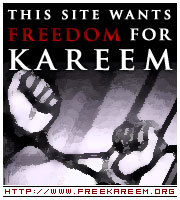Stratfor on the Islamisation of India's North-East
Stratfor opines India should give closer attention to the growing Islamisation in the northeast.But with the UPA govt on a Muslim appeasement drive, this is like asking for the moon.
Northeastern India is a region wracked by secessionist violence, where wide networks of drug smuggling, extortion and arms trafficking run rampant. India has traditionally dealt with the myriad secessionist movements through force, fearing that any concessions made to one group would only exacerbate the others' secessionist tendencies and further undermine the country's territorial integrity. The balkanization of the region and the constant drain on Indian resources required to deal with these rebel movements was all part of the United Kingdom's blueprint for the Indian subcontinent to prevent its former colony from developing a strong national identity and emerging as a major Asiatic power. Up until the partition in 1947, the British played a major role in encouraging tribal, ethnic, religious and linguistic identities, and in isolating various tribal groups from the mainland and the plains areas in Assam for the British East India Co. to secure its commercial enterprise. Pakistan did not hesitate to jump in where the British left off in the post-partition period, and has since used its Inter-Services Intelligence (ISI) agency to fund, train and arm these rebel groups in order to keep India's hands tied. The largest and most powerful of the northeast secessionist movements is the United Liberation Front of Asom (ULFA). Once a student movement with populist aims to redistribute the state's oil wealth, ULFA has gradually changed into what appears to be a moneymaking machine with a strong willingness to do the ISI's bidding. ULFA runs an impressive extortion racket in the northeast, where Assam's tea plantation owners and corporate leaders are regularly targeted. The group maintains that its armed campaign will not let up until the Indian government engages it in unconditional peace talks. Yet, when New Delhi makes such an offer, ULFA usually responds with a bombing, as was the case in the April 9 bomb attack near Indian Prime Minister Manmohan Singh's motorcade in the Assamese capital of Guwahati. ULFA's leadership understands that New Delhi is not about to reward the armed movement with political concessions, and does not wish to disturb the financial networks it has running throughout the region. Moreover, to preserve their militant proxy, the group's handlers in both Pakistan's and Bangladesh's intelligence services have told ULFA not to hold peace talks with the Indian government. Pakistan's ISI, in cooperation with Bangladesh's Directorate General of Forces Intelligence (DGFI), appears to be investing a considerable amount of resources in solidifying India's militant corridor. There are growing indications that these two agencies are working clandestinely in Bangladesh to bring all the northeast-based insurgent outfits and jihadist elements under one umbrella. The ISI has facilitated cooperation between ULFA and other northeastern militant outfits with the Liberation Tigers of Tamil Eelam in Sri Lanka, Islamist militant groups in Kashmir, Islamist groups in Bangladesh and a growing number of al Qaeda-linked jihadist groups operating in the region. Religion, ethnicity and ideology lose relevance within this militant network, as each group has a common interest in furthering their militant and financial capabilities by working together. For example, Tigers cadres organize training camps in the northeast and use their maritime contacts to assist ULFA in transporting arms and narcotics up to Cambodia in ULFA-owned shrimp trawlers that operate out of Bangladesh's Chittagong port. The Tigers have also been known to train Maoist rebels in Nepal and India at camps in the jungles of India's eastern state of Bihar. ULFA's growing links with Bangladeshi Islamists and jihadist elements in the area are increasingly coming to light. The April 9 attack timed with Singh's visit to Assam marked the group's first-ever suicide bombing, a tactic that was pioneered by the Tigers (a non-Islamist, majority Hindu group) and has been frequently employed by Islamist militants. Prior to the attack, ULFA chairman Arabinda Rajkhowa warned that New Delhi's offer for unconditional peace talks was not acceptable, and that that ULFA cadres "have reached such a stage they would strap bombs on their chest and attack." ULFA's adoption of suicide bombing looks to be the result of the group's increased Islamization caused by collusion with Islamist outfits in the region. The bomber in the April 9 suicide attack was Ainul Ali, a Muslim. Indian security sources revealed that ULFA did not have many Muslim cadres in its fold in the past, but the increasing flow of Bangladeshi refugees across the border has given the group more -- and more capable -- members willing to sacrifice their lives for the group's cause with nudging from the ISI. Collaboration between ULFA and the Islamist militants will expand further, as political conditions in Bangladesh appear to be indirectly contributing to the empowerment of Islamists there. Using the Pakistani military regime as an example, Bangladeshi army chief Lt. Gen. Moeen U. Ahmed is reasserting the army's role in Bangladeshi politics -- which have long suffered from a bitter political feud between the family dynasties represented by the Awami League, led by Sheikh Hasina, and the Bangladesh Nationalist Party, led by Begum Khaleda Zia. With both party leaders driven into exile, a political vacuum has started to take root in the country, and Bangladesh's Islamist parties are anxiously waiting to fill it. India will be taking note of these political developments in Dhaka, though there is not much New Delhi can or wants to do to intervene. As a result, New Delhi is facing a bleak situation in which the ISI's maneuvers and Bangladesh's political troubles are sure to further constrain India's ability to dig itself out of the militant trap Pakistan has set.[Stratfor] |






No comments:
Post a Comment